Resident Crews of the International Space Station (ISS)
![]()
ISS: Expedition 40 |
 |
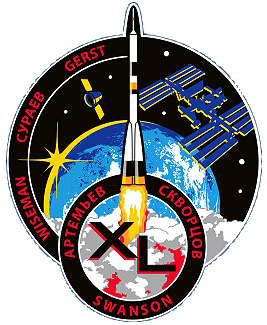 |
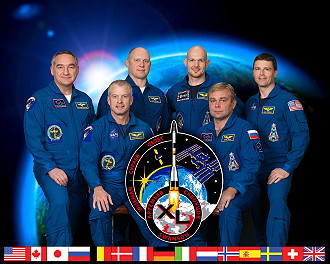 |
alternative crew photo |
|
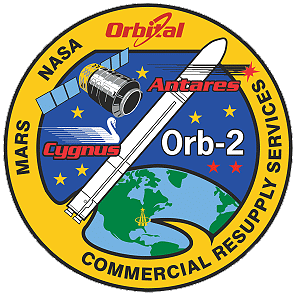 |
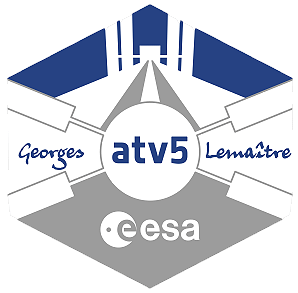 |
![]()
Crew, launch- and landing data
| No. | Nation | Surname | Given names | Position | Spacecraft (launch) |
Launch date |
Launch time |
Spacecraft (landing) |
Landing date |
Landing time |
Mission duration |
Orbits |
| 1 | Swanson | Steven Ray "Swanny" | ISS-CDR | Soyuz TMA-12M | 25.03.2014 | 21:17:23.053 UTC | Soyuz TMA-12M | 11.09.2014 | 02:23:09.0 UTC | 169d 05h 05m 46s | 2626 | |
| 2 | Skvortsov | Aleksandr Aleksandrovich Jr. | Flight Engineer-1 | Soyuz TMA-12M | 25.03.2014 | 21:17:23.053 UTC | Soyuz TMA-12M | 11.09.2014 | 02:23:09.0 UTC | 169d 05h 05m 46s | 2626 | |
| 3 | Artemyev | Oleg Germanovich | Flight Engineer-2 | Soyuz TMA-12M | 25.03.2014 | 21:17:23.053 UTC | Soyuz TMA-12M | 11.09.2014 | 02:23:09.0 UTC | 169d 05h 05m 46s | 2626 | |
| 4 | Surayev | Maksim Viktorovich | Flight Engineer-4 | Soyuz TMA-13M | 28.05.2014 | 19:57:40.981 UTC | Soyuz TMA-13M | 10.11.2014 | 03:58:49.8 UTC | 165d 08h 01m 09s | 2566 | |
| 5 | Wiseman | Gregory Reid | Flight Engineer-5 | Soyuz TMA-13M | 28.05.2014 | 19:57:40.981 UTC | Soyuz TMA-13M | 10.11.2014 | 03:58:49.8 UTC | 165d 08h 01m 09s | 2566 | |
| 6 | Gerst | Alexander | Flight Engineer-6 | Soyuz TMA-13M | 28.05.2014 | 19:57:40.981 UTC | Soyuz TMA-13M | 10.11.2014 | 03:58:49.8 UTC | 165d 08h 01m 09s | 2566 |
unofficial Backup Crew
| No. | Nation | Surname | Given names | Position |
| 1 | Wilmore | Barry Eugene "Butch" | ISS-CDR | |
| 2 | Samokutyayev | Aleksandr Mikhailovich | Flight Engineer | |
| 3 | Serova | Yelena Olegovna | Flight Engineer | |
| 4 | Shkaplerov | Anton Nikolayevich | Flight Engineer | |
| 5 | Cristoforetti | Samantha | Flight Engineer | |
| 6 | Virts | Terry Wayne, Jr. | Flight Engineer |
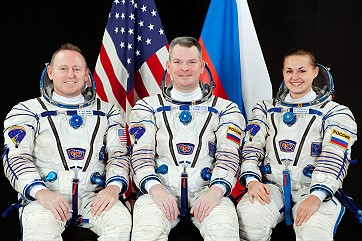 |
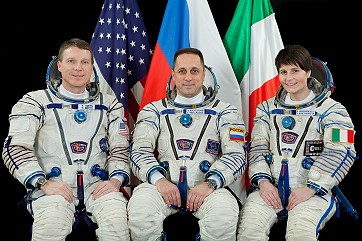 |
 |
Expedition Report
|
Launch from the Baikonur Cosmodrome (Maksim
Surayev, Reid
Wiseman and Alexander
Gerst with
Soyuz
TMA-13M). Aleksandr
Skvortsov, Oleg
Artemyev and Steven
Swanson were onboard since March 27, 2014 (arrival with
Soyuz
TMA-12M). ISS Expedition 40 began with the undocking of spacecraft Soyuz TMA-11M on May 13, 2014 at 22:35:56 UTC. The former Expedition 39 (Mikhail Tyurin, Richard Mastracchio and Koichi Wakata) returned safely to Earth. One of the first objectives for the remaining crew members Aleksandr Skvortsov, Oleg Artemyev and Steven Swanson was to undock Dragon SpX-3 from the Harmony module on May 18, 2014. The freighter was linked with the station since April 20, 2014. With 1.5 tons old equipment and experiment results the capsule splashed down near Mexico in the Pacific and was recovered. With the arrival of Soyuz TMA-13M on May 29, 2014 the Expedition 40 became a six-person-crew. Soyuz TMA-13M carried Maksim Surayev, Reid Wiseman and Alexander Gerst to the space station. As part of the European mission Blue Dot Alexander Gerst carried an experiment package with 35 experiments of different scientific fields. On June 09, 2014 at 13:29 UTC the unmanned Russian freighter Progress M-21M undocked from the International Space Station. It was filled with trash and other no longer needed items. The transporter was deorbited the same day at 17:23 UTC over the South Pacific. The first EVA in this expedition was performed by Aleksandr Skvortsov and Oleg Artemyev on June 19, 2014 (7h 23m). The primary objectives of the spacewalk were focused at servicing the exterior of the Zvezda service module and the experiments mounted in that location. The two spacewalking cosmonauts installed an automated phased antenna array (AFAR), which will serve as part of the Russian command and telemetry system. They also relocated a part of the Obstanovka experiment - which is used to monitor the presence of charged particles and plasma in the environment of Low Earth Orbit (LEO). Other tasks included verifying the correct installation of the universal work platform (URM-D), taking samples from one of Zvezda's windows, and jettisoning an experiment frame. The Orbital Sciences Corporation Antares rocket launched from Pad-0A with the Cygnus spacecraft, named "Janice Voss", onboard July 13, 2014 at 16:52:14 UTC, at NASA's Wallops Flight Facility in Virginia. The Cygnus spacecraft is filled with over 3,000 pounds (1,360 kg) of supplies for the International Space Station, including science experiments, experiment hardware, spare parts, and crew provisions. The Orbital-2 mission is Orbital Sciences' second contracted cargo delivery flight to the space station for NASA. On July 16, 2014 flying more than 250 miles (350 km) above Earth, the Orbital Sciences Corp. supply spaceship deftly controlled its approach to the space station, firing rocket thrusters as required guide itself to an imaginary box about 30 feet (9.14 meters) below the outpost. Space station commander Steven Swanson took control of the lab's 58-foot-long (17.7 meters) Canadian-built robotic arm to reach out and capture the Cygnus spacecraft at 10:36 UTC. Ground controllers in Houston commanded the robot arm to maneuver the Cygnus spacecraft into position on the Harmony module's Earth-facing berthing port. A series of 16 bolts were driven into place to establish a firm mechanical connection between the Cygnus and the space station. The unmanned Russian freighter Progress M-23M undocked from the International Space Station on July 21, 2014. Progress M-23M was filled with trash and other no longer needed items. The spacecraft remained in orbit as part of the Radar-Progress experiment and was then deorbited on July 31, 2014 at 22:42 UTC over the South Pacific. The undocking made the docking node free for the next Russian freighter, Progress M-24M. The vehicle was launched from the Baikonur Cosmodrome on July 23, 2014 at 21:44:44 UTC. Only six hours in flight Progress M-24M docked with the Pirs module of the station on July 24, 2014 at 03:31:37 UTC. The craft carried 2,322 kg of cargo and supplies to the International Space Station. The European Space Agency's fifth and final Automated Transfer Vehicle (ATV-5) cargo ship has completed its two-week trek to the International Space Station. Named after the 20th century Belgian astronomer, the "Georges Lemaitre" docked automatically to the Zvezda service module's aft port August 12, 2014 at 13:29:53 UTC. The ATV-5 launched atop an Ariane 5 heavy-lift rocket July 29, 2014 at 23:47:38 UTC from Kourou, French Guiana, carrying nearly seven tons of science, supplies, food and fuel to replenish the station crew. During its slow, deliberate approach to the space station, the ATV-5 flew less than four miles underneath the station on August 08, 2014 to test new rendezvous sensors and laser systems before looping above and behind the station for the final phase of its rendezvous. The advanced technology was tested for possible incorporation in the design of future European spacecraft. The "Georges Lemaitre" was scheduled to end its stay at the station and complete its mission in February 2015. The ATV-5 undocked from Zvezda on February 14, 2015 loaded with trash and discarded gear for a fiery disposal over the Pacific Ocean. On August 15, 2014 at 09:14 UTC the commercial freighter Cygnus Orb-2 was separated from the module Harmony by using the SSRMS. At 10:42 UTC the crew let the craft free in its own orbit. Filled with trash Cygnus Orb-2 was deorbited on August 17, 2014 at 13:22 UTC. The second spacewalk was conducted by Aleksandr Skvortsov and Oleg Artemyev on August 18, 2014 (5h 11m). The cosmonauts deployed a nanosatellite, installed two experiment packages (EXPOSE-R and Plume Impingement Deposit Monitoring) and retrieved others (CKK#1, Vinoslivosk and Biorisk). In addition, they installed holder on Automatic Phased Array (AFAR) antenna, took surface samples from a window on Zvezda and photographed Multi-Layer Insulation from the exterior of the Russian ISS segment. Earth remote sensing, an assessment of human behavior and performance and studies of animal biology and bone and muscle physiology define the research of Expedition 40. Other investigations include technology demonstrations, physical and space sciences and educational activities. Expedition 40 activities will help advance our body of scientific knowledge, leading to potential Earth benefits such as improved weather forecasts and human medical advancements. International Space Station-Rapid Scatterometer (ISS-RapidScat): The ISS-RapidScat will monitor ocean winds from the ideal vantage point of the space station. This space-based scatterometer is a remote sensing instrument that uses radar pulses reflected from the ocean's surface from different angles to calculate surface wind speed and direction. This information will be useful for weather forecasting and hurricane monitoring. In addition to improving weather models, the ISS-RapidScat instrument enhances measurements from other international scatterometers by cross-checking their data. Due to its unique orbit, ISS-RapidScat will observe different parts of the planet at different times of day, allowing the instrument to track the effects of the sun on ocean winds as the day progresses. Because the instrument reuses leftover hardware originally built to test parts of the now inoperable NASA QuikScat scatterometer, this investigation demonstrates a unique way to replace an instrument aboard an aging satellite. Assessing the Impact of Communication Delay on Behavioral Health and Performance: An Examination of Autonomous Operations Utilizing the International Space Station (Comm Delay Assessment): Comm Delay Assessment evaluates the effects of delayed communications for interplanetary crews that have to handle medical and other emergencies in deep space. In addition to time delays experienced as they travel farther away from Earth, uncertainty in performing a crucial task can impact crew performance and interaction. Three crew members will perform eight tasks, with and without 50-second delays added. These tasks will vary in their level of stress and familiarity. This type of research may help refine procedures for Earth-based teams that operate in extreme or remote environments with intermittent or no contact with a home base and its experts. Rodent Research Hardware and Operations Validation (Rodent Research-1): Rodent research hardware provides a platform for long-duration rodent experiments in space. These experiments examine how microgravity affects animals, providing information relevant to human spaceflight, discoveries in basic biology and knowledge that will have direct impact toward human health on Earth. Rodent Research-1 tests the operational capabilities of the new hardware system, including the transporter, rodent habitat, and access unit. In-flight Demonstration of Portable Load Monitoring Devices- Phase I: XSENS ForceShoe (Force Shoes): The Force Shoes investigation is an evaluation of the XSENS ForceShoe system as a potential method to measure exercise loads on the Advanced Resistive Exercise Device (ARED) during crew member exercise sessions on the space station. Up to four astronauts will collect a series of static and dynamic load measurements using ARED. Researchers will use the measurements made by the XSENS ForceShoe system to quantify exercise load data needed for support of current and future human research experiments. This data also will be applied to populations on Earth restricted from exercise by injury, age, lifestyle or confined work and living space. On September 10, 2014 Steven Swanson changed the ISS command to Maksim Surayev. With the undocking of Soyuz TMA-12M at 23:01:30 UTC from the Poisk module of the ISS Expedition 40 concluded and ISS Expedition 41 began. Aleksandr Skvortsov, Oleg Artemyev and Steven Swanson landed safely in Kazakhstan. During the stay on board of the ISS the crews of Expeditions 39 / 40 carried out the following scientific experiments: 3D Printing In Zero-G (3D Printing In Zero-G Technology Demonstration) 3DA1 Camcorder (Panasonic 3D Camera) ACE-M-2 (Advanced Colloids Experiment-Microscopy-2 ) ACE-M-3 (Advanced Colloids Experiment-Microscopy-3) AES-1 (Antibiotic Effectiveness in Space-1) AMO-TOCA (Autonomous Mission Operations TOCA Autonomous Operations Project) AMS-02 (Alpha Magnetic Spectrometer - 02) APEX-02-2 (Advanced Plant EXperiments-02-2) ATOMIZATION (Detailed validation of the new atomization concept derived from drop tower experiments--Aimed at developing a turbulent atomization simulator) Alloy Semiconductor (Crystal Growth of Alloy Semiconductor Under Microgravity) Amine Swingbed (Amine Swingbed) Aniso Tubule (Roles of cortical microtubules and microtubule-associated proteins in gravity-induced growth modification of plant stems) Area PADLES (Area Passive Dosimeter for Life-Science Experiments in Space ) BASS-II (Burning and Suppression of Solids - II) BCAT-3-4-CP (Binary Colloidal Alloy Test - 3 and 4: Critical Point) BCAT-4-Poly (Binodal Colloidal Aggregation Test - 4: Polydispersion) BCAT-C1 (Binary Colloidal Alloy Test - C1) BCAT-KP (Binary Colloidal Alloy Test - Kinetics Platform) BP Reg (A Simple In-flight Method to Test the Risk of Fainting on Return to Earth After Long-Duration Space Flights) BRIC-18-1 (Development of Multiple Antibiotic Resistance By Opportunistic Bacterial Pathogens During Human Space Flight) BRIC-18-2 (Mechanisms for plant adaptation to space environment) Biochem Profile (Biochemical Profile) Biological Rhythms 48hrs (The effect of long-term microgravity exposure on cardiac autonomic function by analyzing 48-hours electrocardiogram) Biotube-MICRO (Biotube-Magnetophoretically Induced Curvature in Roots) Bisphosphonates (Bisphosphonates as a Countermeasure to Space Flight Induced Bone Loss) Body Measures (Quantification of In-Flight Physical Changes - Anthropometry and Neutral Body Posture) CARTILAGE (CARTILAGE) CASIS PCG HDPCG-1 (Crystallization of Huntingtin Exon 1 Using Microgravity) CASIS PCG HDPCG-2 (Advancing Membrane Protein Crystallization By Using Microgravity) CATS (Cloud-Aerosol Transport System) CCF (Capillary Channel Flow) CEO (Crew Earth Observations) CFE-2 (Capillary Flow Experiment - 2) CPCG-HM (Commercial Protein Crystal Growth - High density protein crystal growth Modified) CSI-06 (Commercial Generic Bioprocessing Apparatus Science Insert - 06: Ants in Space) Cardio Ox (Defining the Relation Between Biomarkers of Oxidative and Inflammatory Stress and Atherosclerosis Risk in Astronauts During and After Long-duration Spaceflight) Cell Mechanosensing-1 (Cell Mechanosensing-1) Cell Mechanosensing-2 (Cell Mechanosensing-2) Characterizing Arabidopsis Root Attractions (CARA) (Molecular Biology of Plant Development in the Space Flight Environment) Circadian Rhythms (Circadian Rhythms) Comm Delay Assessment (Assessing the Impact of Communication Delay on Behavioral Health and Performance: An Examination of Autonomous Operations Utilizing the International Space Station) CsPINs (Dynamism of Auxin Efflux Facilitators, CsPINs, Responsible for Gravity-regulated Growth and Development in Cucumber) DECLIC DSI-R (DEvice for the study of Critical LIquids and Crystallization - Directional Solidification Insert-Reflight) DOD SPHERES-RINGS (Department of Defense Synchronized Position, Hold, Engage, Reorient, Experimental Satellites-RINGS) DOSIS-3D (Dose Distribution Inside the International Space Station - 3D) DTN (Disruption Tolerant Networking for Space Operations) Dynamic Surf (Experimental Assessment of Dynamic Surface Deformation Effects in Transition to Oscillatory Thermo capillary Flow in Liquid Bridge of High Prandtl Number Fluid) EPO-Demos (Education Payload Operation-Demonstrations) Energy (Astronaut's Energy Requirements for Long-Term Space Flight) FASTER (Facility for Absorption and Surface Tension) FLEX-2 (Flame Extinguishment Experiment - 2) Force Shoes (In-flight Demonstration of Portable Load Monitoring Devices-Phase I: XSENS ForceShoe™) Functional Task Test (Physiological Factors Contributing to Postflight Changes in Functional Performance) Gravi-2 (Threshold Acceleration for Gravisensing - 2) HDEV (High Definition Earth Viewing) HREP-HICO (HICO and RAIDS Experiment Payload - Hyperspectral Imager for the Coastal Ocean) HREP-RAIDS (HICO and RAIDS Experiment Payload - Remote Atmospheric and Ionospheric Detection System (RAIDS)) HiMassSEE (Spacecraft Single Event Environments at High Shielding Mass) Hicari (Growth of Homogeneous SiGe Crystals in Microgravity by the TLZ Method) Hybrid Training (Effect of the Hybrid Training Method on the Disuse Atrophy of the Musculoskeletal System of the Astronauts Staying in the International Space Station for a Long Term-initial verification in ISS) ISERV (ISS SERVIR Environmental Research and Visualization System) ISS Ham Radio (International Space Station Ham Radio) ISS-RapidScat (ISS-RapidScat) ISTAR Comm Delay Prep (ISS Testbed for Analog Research Communication Delay Preparation) IVA Clothing Study (Intravehicular Activity Clothing Study) Ice Crystal 2 (Crystal growth mechanisms associated with the macromolecules adsorbed at a growing interface - Microgravity effect for self-oscillatory growth - 2) Intervertebral Disc Damage (Risk of Intervertebral Disc Damage after Prolonged Space Flight) JAXA EPO 12 (JAXA Education Payload Observation 12) JAXA PCG (Japan Aerospace Exploration Agency Protein Crystal Growth) JAXA-Commercial (Japan Aerospace Exploration Agency - Commercial Payload Program) Journals (Behavioral Issues Associated with isolation and Confinement: Review and Analysis of Astronaut Journals) MAXI (Monitor of All-sky X-ray Image) MCE (Multi-mission Consolidated Equipment) MDS (Mice Drawer System) METERON (METERON Quick Start a / DTN) MISSE-8 FSE (MISSE-8 FSE) MVIS Controller-1 (MVIS Controller 1) Manual Control (Assessment of Operator Proficiency Following Long-Duration Space Flight) Micro-7 (MicroRNA Expression Profiles in Cultured Human Fibroblasts in Space) Microbiome (Study of the Impact of Long-Term Space Travel on the Astronauts' Microbiome) Microgravity Growth of Antibody Crystals in the Hand Held High Density Protein Crystal Growth (Microgravity Growth of Single Antibody Crystals for Structure) Multi-Gas Monitor (Multi-Gas Monitor) NanoRacks-Heart Flies (Heart Effect Analysis Research Team conducting FLy Investigations and Experiments in Spaceflight) NanoRacks-Mission Discovery (NanoRacks-Mission Discovery ISS Bio-Medical Experiments) NanoRacks-Planet Labs-Dove (NanoRacks-Planet Labs-Dove) OPALS (Optical PAyload for Lasercomm Science) Ocular Health (Prospective Observational Study of Ocular Health in ISS Crews) On-Orbit Crystals (Exploiting On-orbit Crystal properties for Structural Studies of Medically and Economically Important Targets) PC4NC (Protein Crystals for Neutron Crystallography (PC4NC) Large volume crystal growth of Inorganic Pyrophosphatase complexes by counter-diffusion in microgravity for neutron diffraction studies. ) Plant Gravity Sensing 1 (Utilization of the micro gravity condition to examine the cellular process of formation of the gravity sensor and the molecular mechanism of gravity sensing) Pro K (Dietary Intake Can Predict and Protect Against Changes in Bone Metabolism during Spaceflight and Recovery) Protein Crystallography (Crystallization of Medically Relevant Proteins Using Microgravity) RRM-Phase 2 (Robotic Refueling Mission Phase 2) Radi-N2 (Radi-N2 Neutron Field Study) Radiation Environment Monitor (Radiation Environment Monitor) Reaction Self Test (Psychomotor Vigilance Self Test on the International Space Station) Repository (National Aeronautics and Space Administration Biological Specimen Repository) Resist Tubule (Mechanisms of Gravity Resistance in Plants From Signal Transformation and Transduction to Response) Reversible Figures (Perspective Reversible Figures in Microgravity) Robonaut (Robonaut) Rodent Research-1 (Rodent Research Hardware and Operations Validation) Rodent Research-1 (CASIS) (Muscle Atrophy of Muscle Sparing in Transgenic Mice) SCAN Testbed (Space Communications and Navigation Testbed) SEDA-AP (Space Environment Data Acquisition Equipment - Attached Payload) SMILES (Superconducting Submillimeter-Wave Limb-Emission Sounder) SNFM (Serial Network Flow Monitor) SPHERES-Slosh (SPHERES-Slosh) SPHERES-VERTIGO (Synchronized Position, Hold, Engage, Reorient, Experimental Satellites - VERTIGO) SPHERES-Zero-Robotics (Synchronized Position Hold, Engage, Reorient, Experimental Satellites-Zero-Robotics) STP-H4-ATT (Space Test Program-Houston 4-Active Thermal Tile) STP-H4-FireStation (Space Test Program-Houston 4-FireStation) STP-H4-GLADIS (Space Test Program - Houston 4 - Global Awareness Data-Exfiltration International Satellite) STP-H4-ISE 2.0 (Space Test Program-Houston 4-ISS SpaceCube Experiment 2.0) STP-H4-MARS (Space Test Program-H4-Miniature Array of Radiation Sensors) STP-H4-SWATS (Space Test Program-Houston 4- Small Wind and Temperature Spectrometer) Salivary Markers (The Effects of Long-Term Exposure to Microgravity on Salivary Markers of Innate Immunity) Sally Ride EarthKAM (Sally Ride Earth Knowledge Acquired by Middle School Students) Seedling Growth-1 (Seedling Growth-1) Seedling Growth-2 (Seedling Growth-2) Skin-B (Skin-B) Solar-SOLACES (Sun Monitoring on the External Payload Facility of Columbus - SOLar Auto-Calibrating EUV/UV Spectrophotometers) Solar-SOLSPEC (Sun Monitoring on the External Payload Facility of Columbus -Sun Monitoring on the External Payload Facility of Columbus -SOLar SPECtral Irradiance Measurements) Soret-Facet (Study on Soret effect (thermal diffusion process) for the mixed solution by the in-situ observation technique facilitated at SCOF) Space Headaches (Space Headaches) Space Pup (Effect of space environment on mammalian reproduction) SpinSat (SpinSat) Spinal Ultrasound (Sonographic Astronaut Vertebral Examination) Sprint (Integrated Resistance and Aerobic Training Study) Stem Cells (Study on the Effect of Space Environment to Embryonic Stem Cells to Their Development) Story Time From Space (Story Time From Space) T-Cell Act in Aging (T-Cell Activation in Aging) V-C REFLEX (Plastic alteration of vestibulo-cardiovascular reflex and its countermeasure) VIABLE ISS (eValuatIon And monitoring of microBiofiLms insidE International Space Station) Veg-01 (Veggie Hardware Validation Test) Vessel ID System (Vessel ID System) Windows on Earth (Windows on Earth) Zebrafish Muscle (TBD) (Effects of the gravity on maintenance of muscle mass in zebrafish) |
EVA data
| Name | Start | End | Duration | Mission | Airlock | Suit | |
| EVA | Artemyev, Oleg | 19.06.2014, 14:10 UTC | 19.06.2014, 21:33 UTC | 7h 23m | ISS-40 | ISS - Pirs | Orlan-MK No. 4 |
| EVA | Skvortsov, Aleksandr | 19.06.2014, 14:10 UTC | 19.06.2014, 21:33 UTC | 7h 23m | ISS-40 | ISS - Pirs | Orlan-MK No. 5 |
| EVA | Artemyev, Oleg | 18.08.2014, 14:0? UTC | 18.08.2014, 19:1? UTC | 5h 11m | ISS-40 | ISS - Pirs | Orlan-MK No. 4 |
| EVA | Skvortsov, Aleksandr | 18.08.2014, 14:0? UTC | 18.08.2014, 19:1? UTC | 5h 11m | ISS-40 | ISS - Pirs | Orlan-MK No. 5 |
ISS Assembly
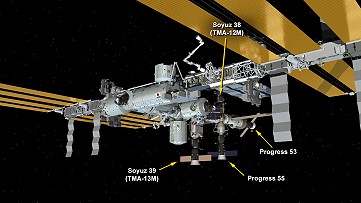 |
Photos
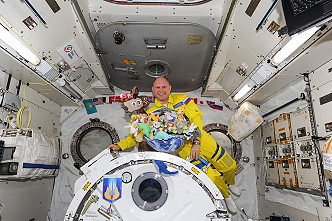 |
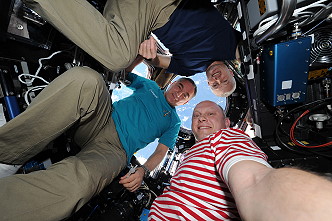 |
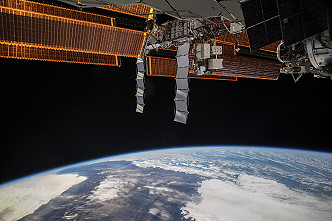 |
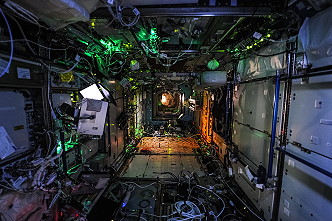 |
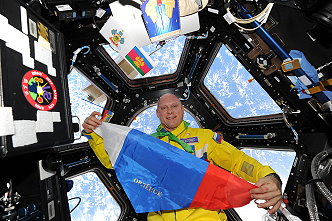 |
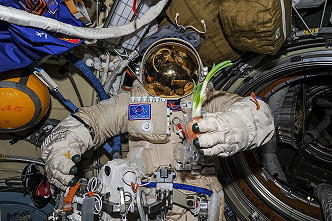 |
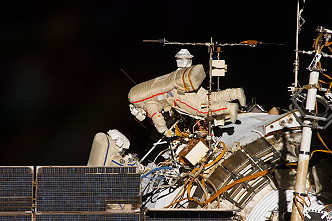 |
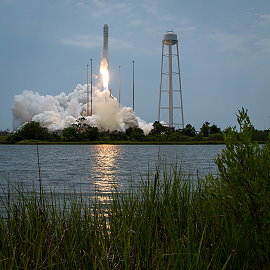 |
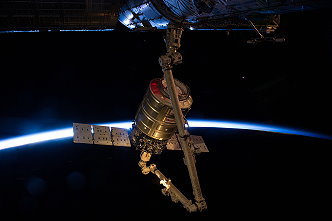 |
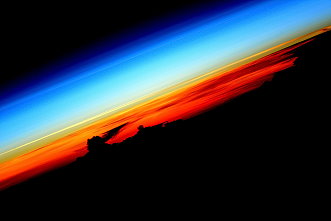 |
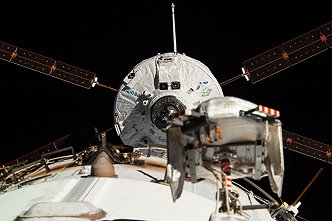 |
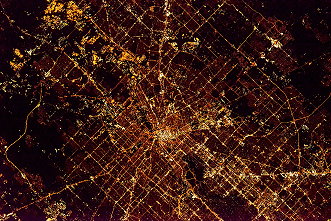 |
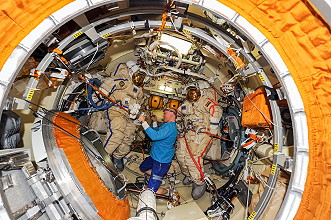 |
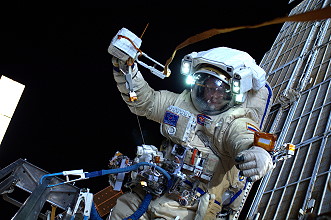 |
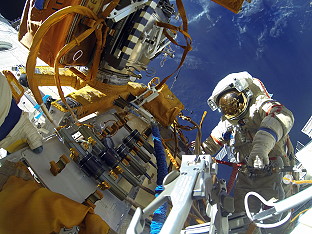 |
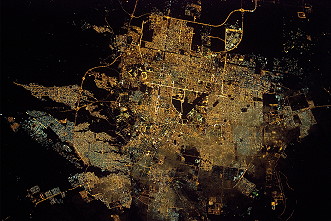 |
 |
|
Earth observation photos |
|
more EVA photos |
|
more onboard photos |
|
| © |  |
Last update on December 14, 2020.  |
 |